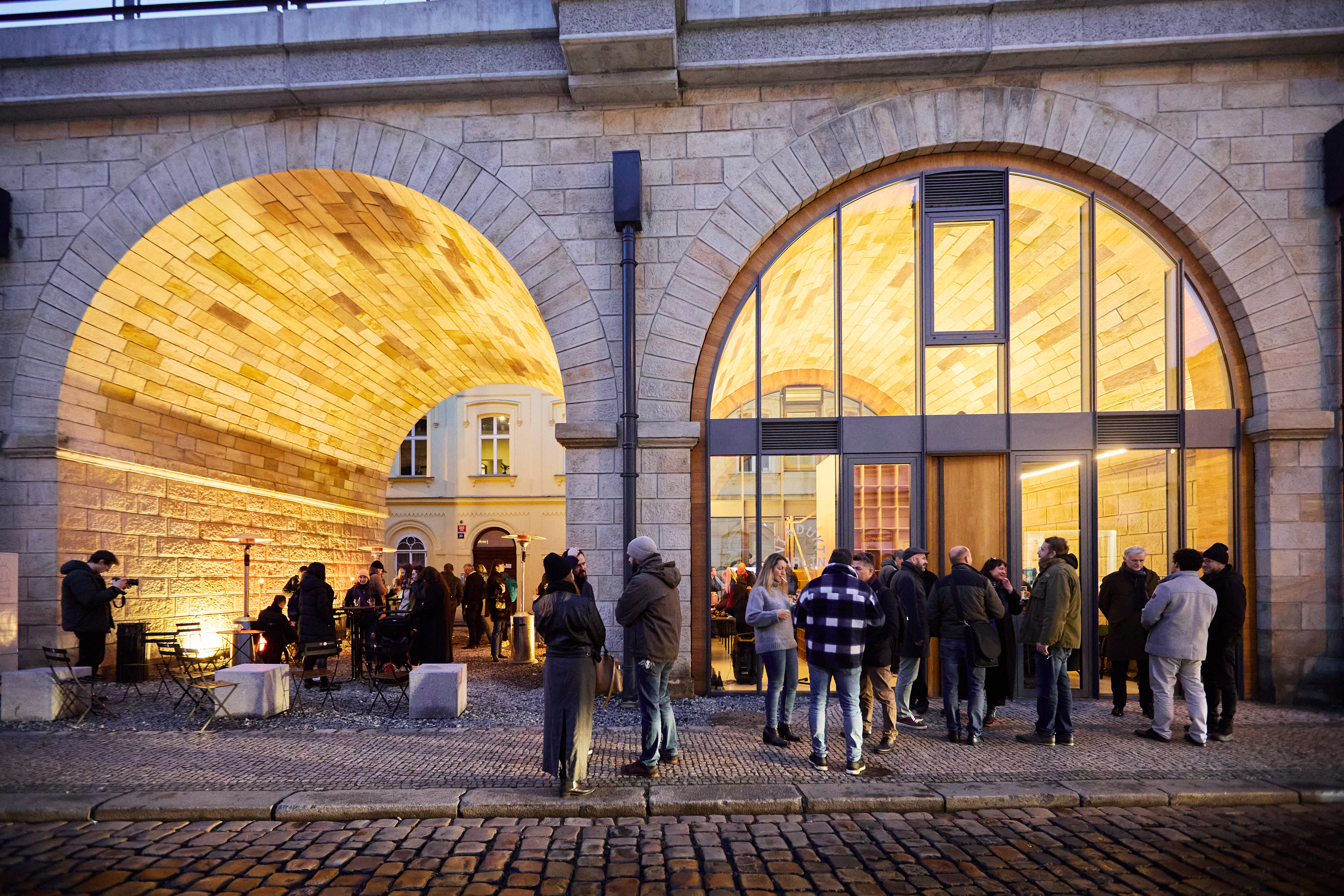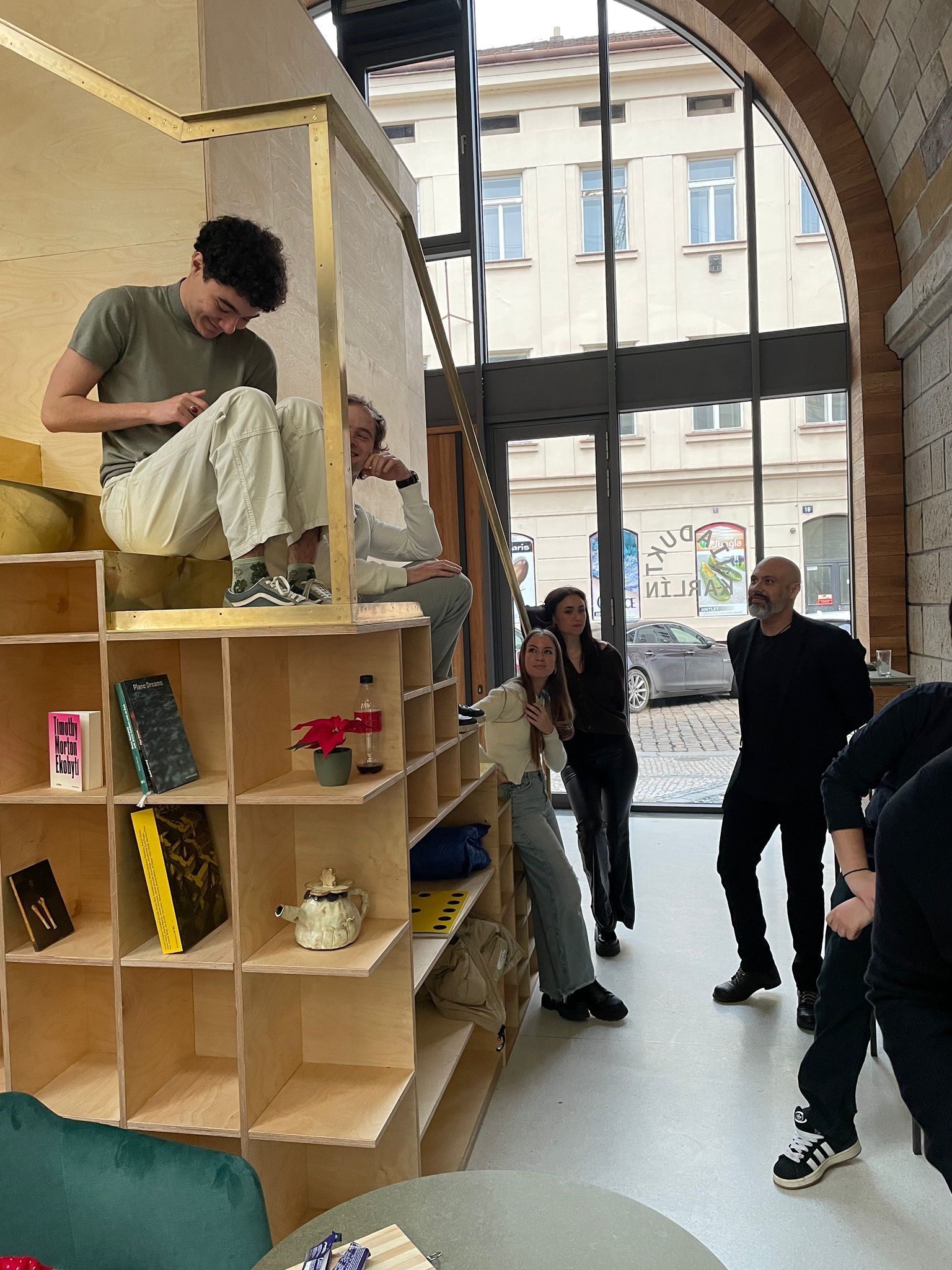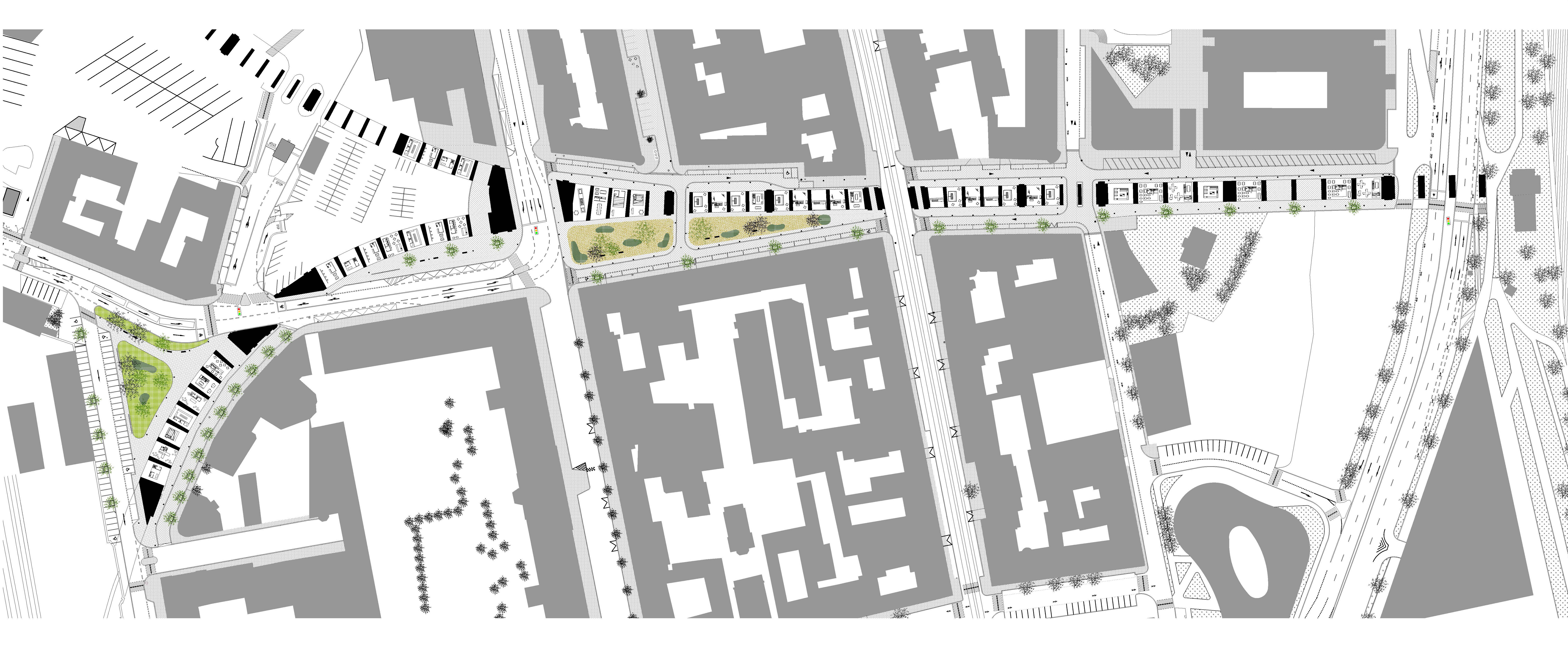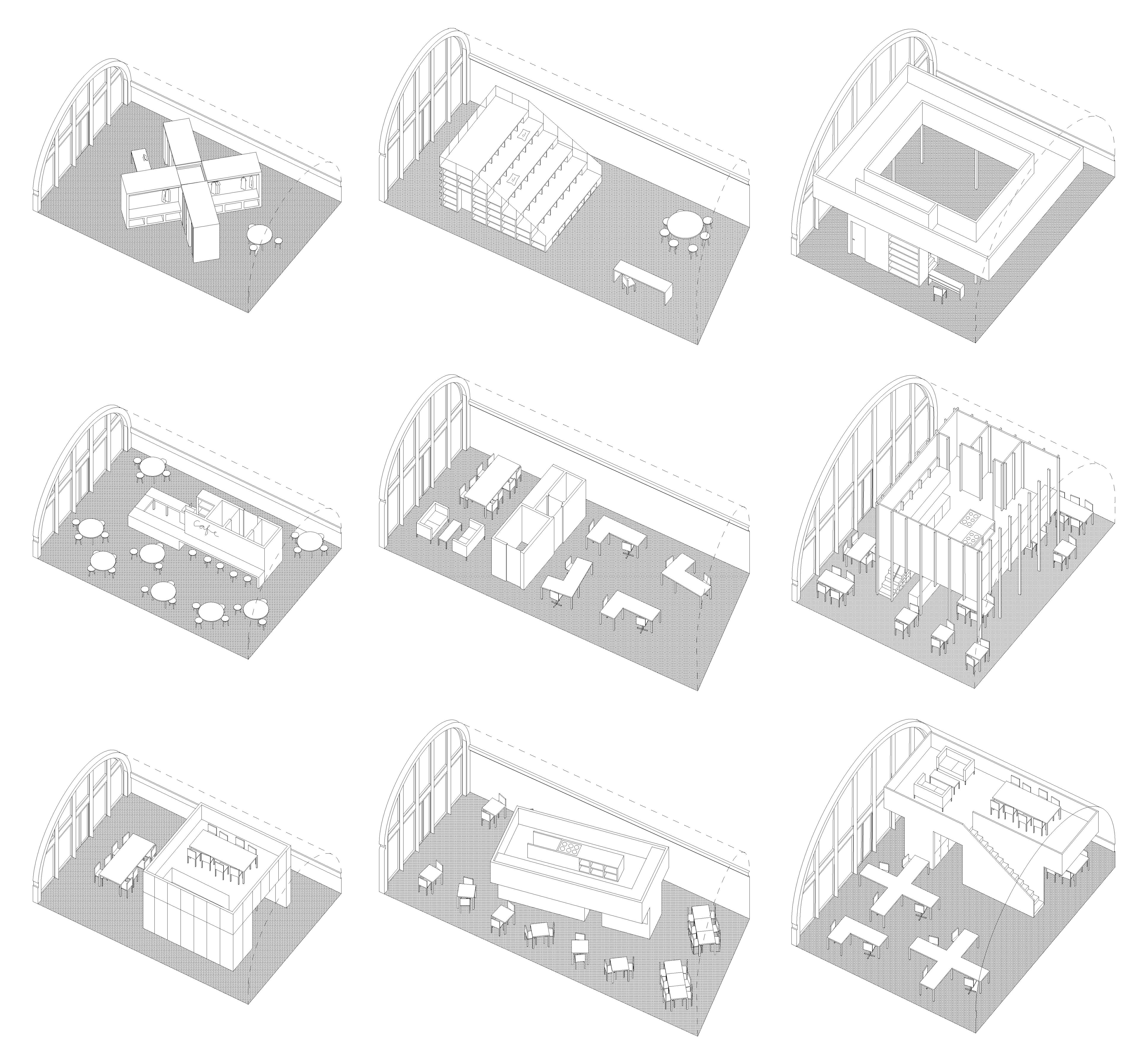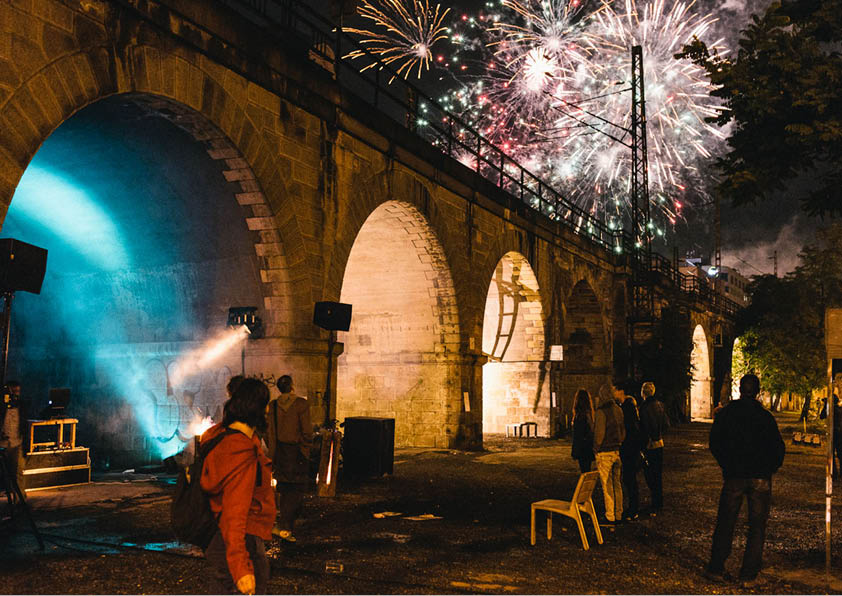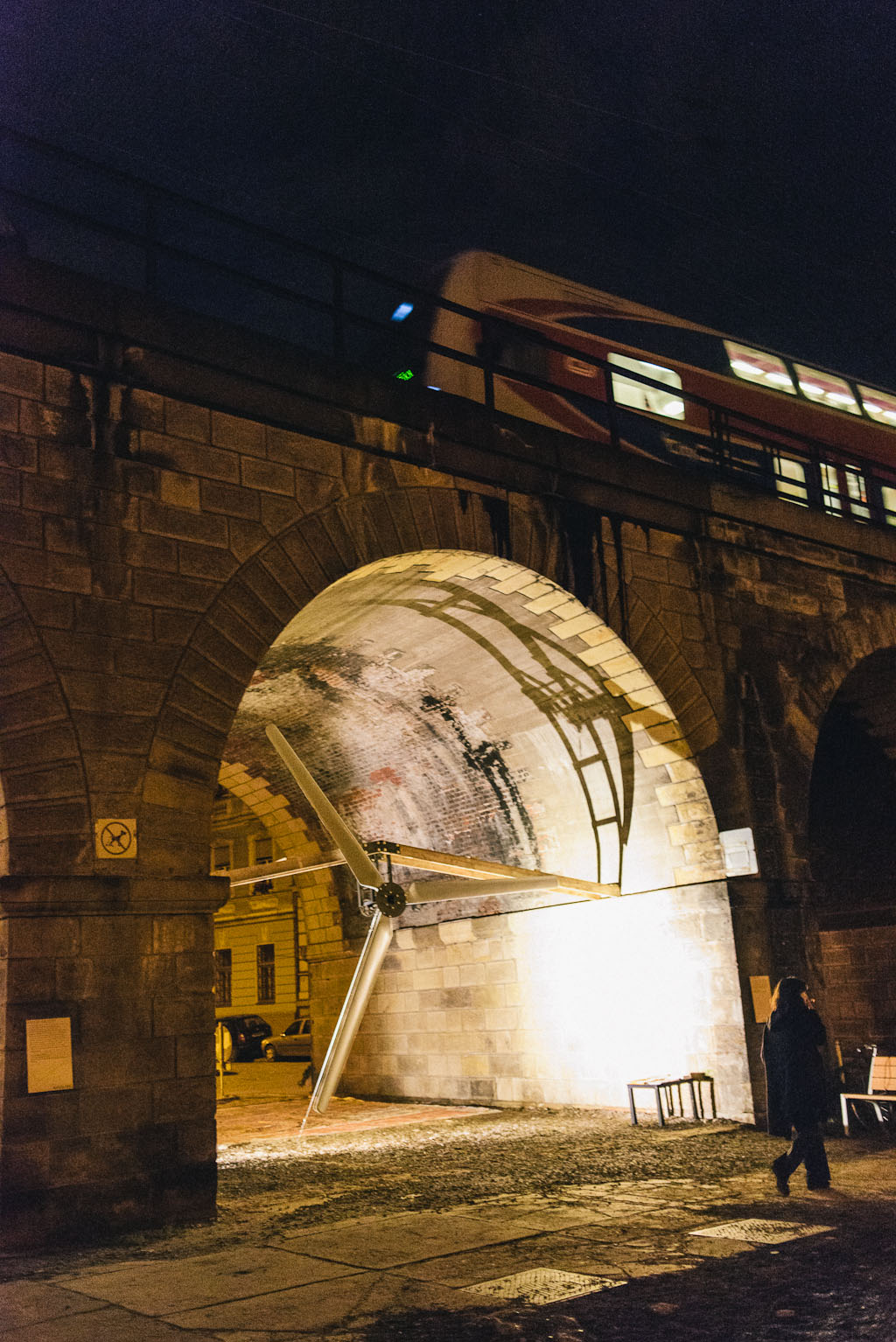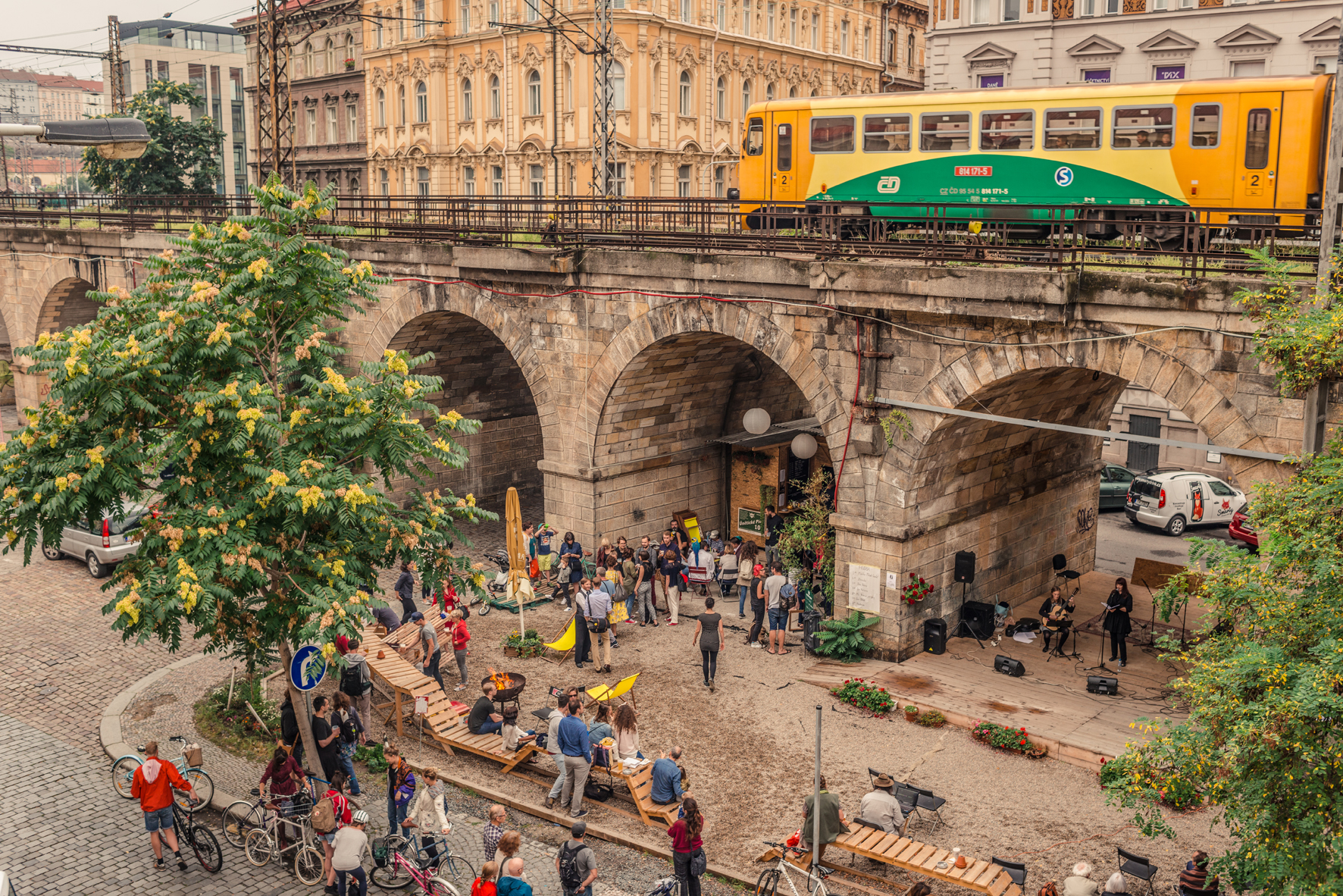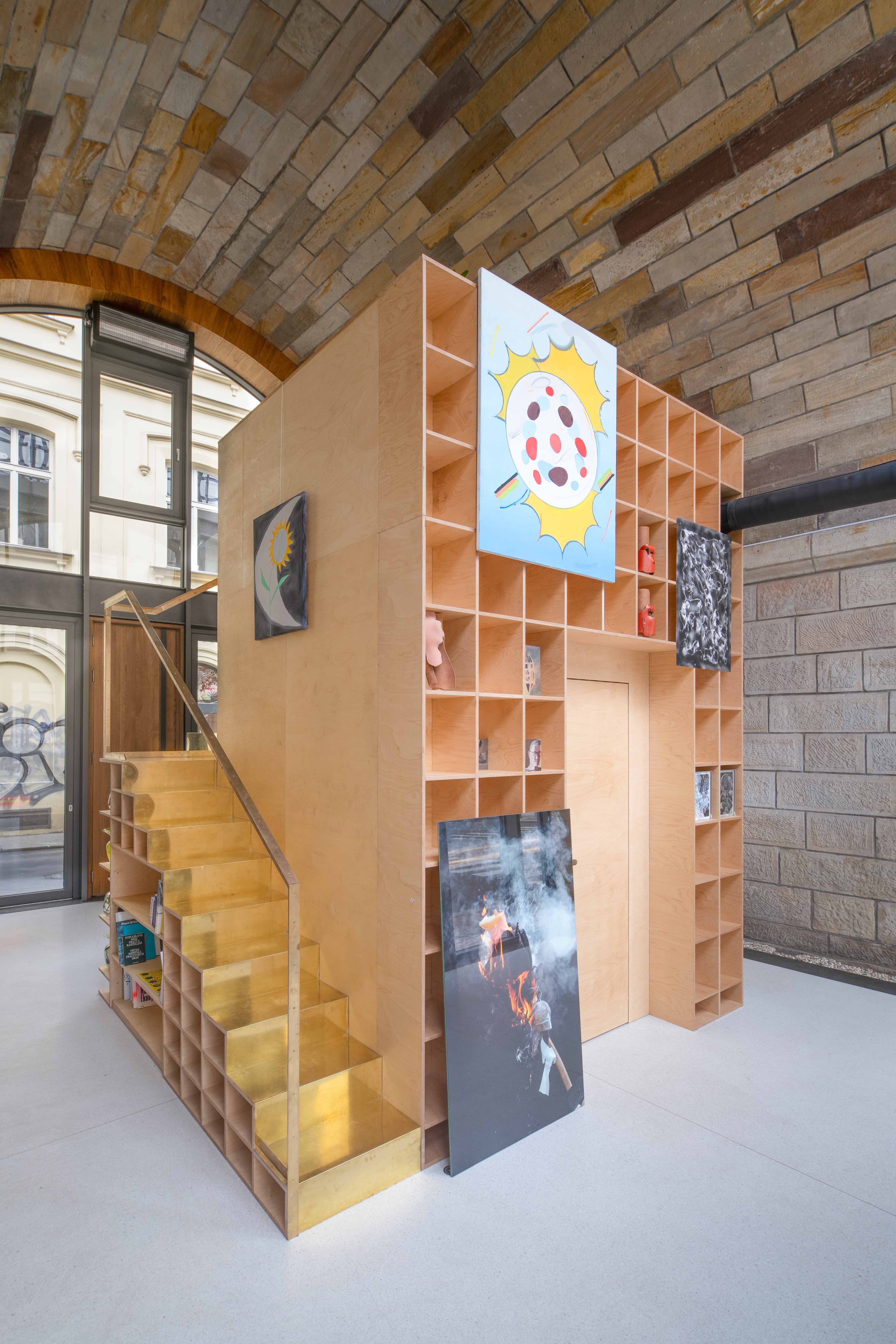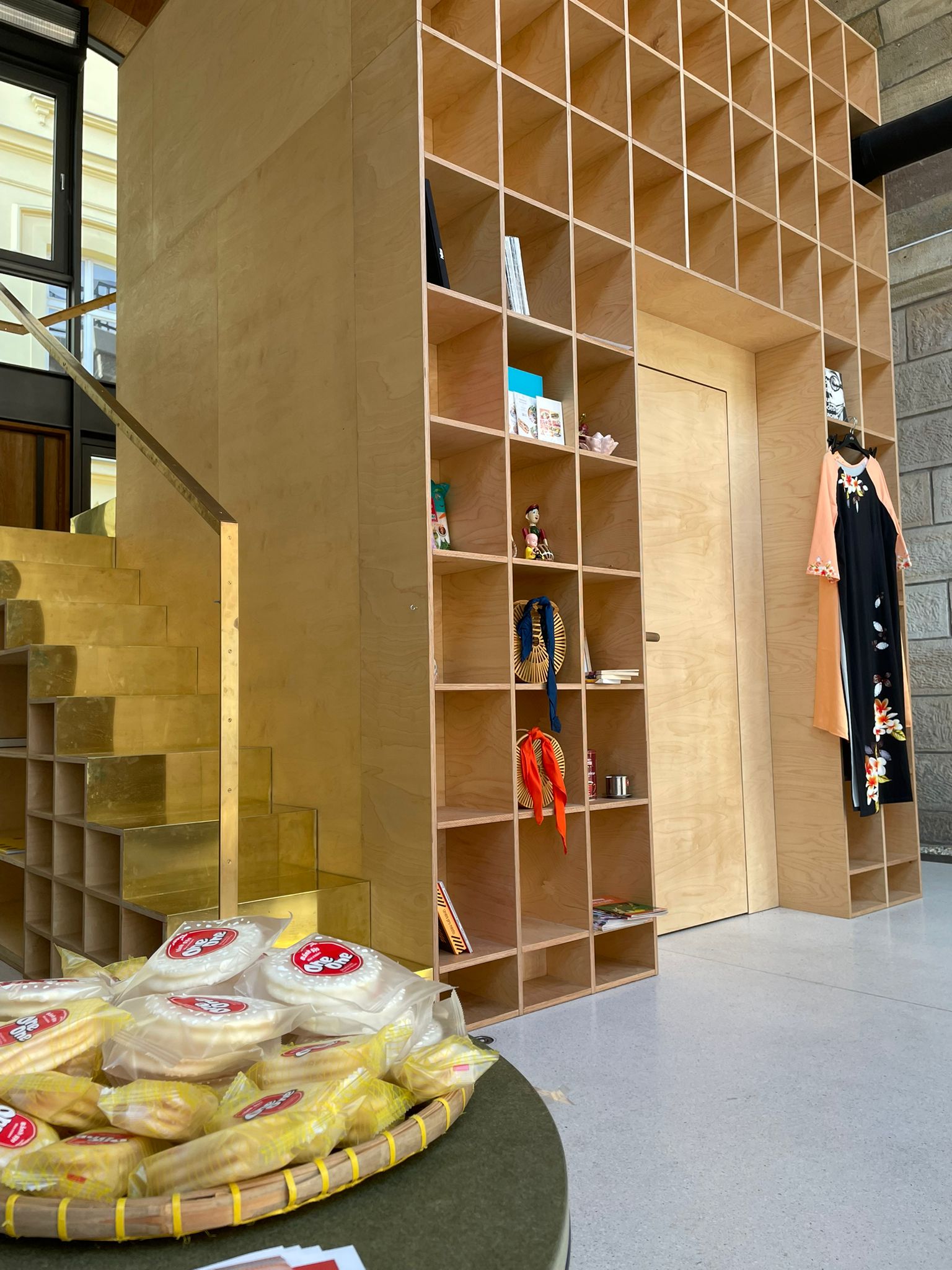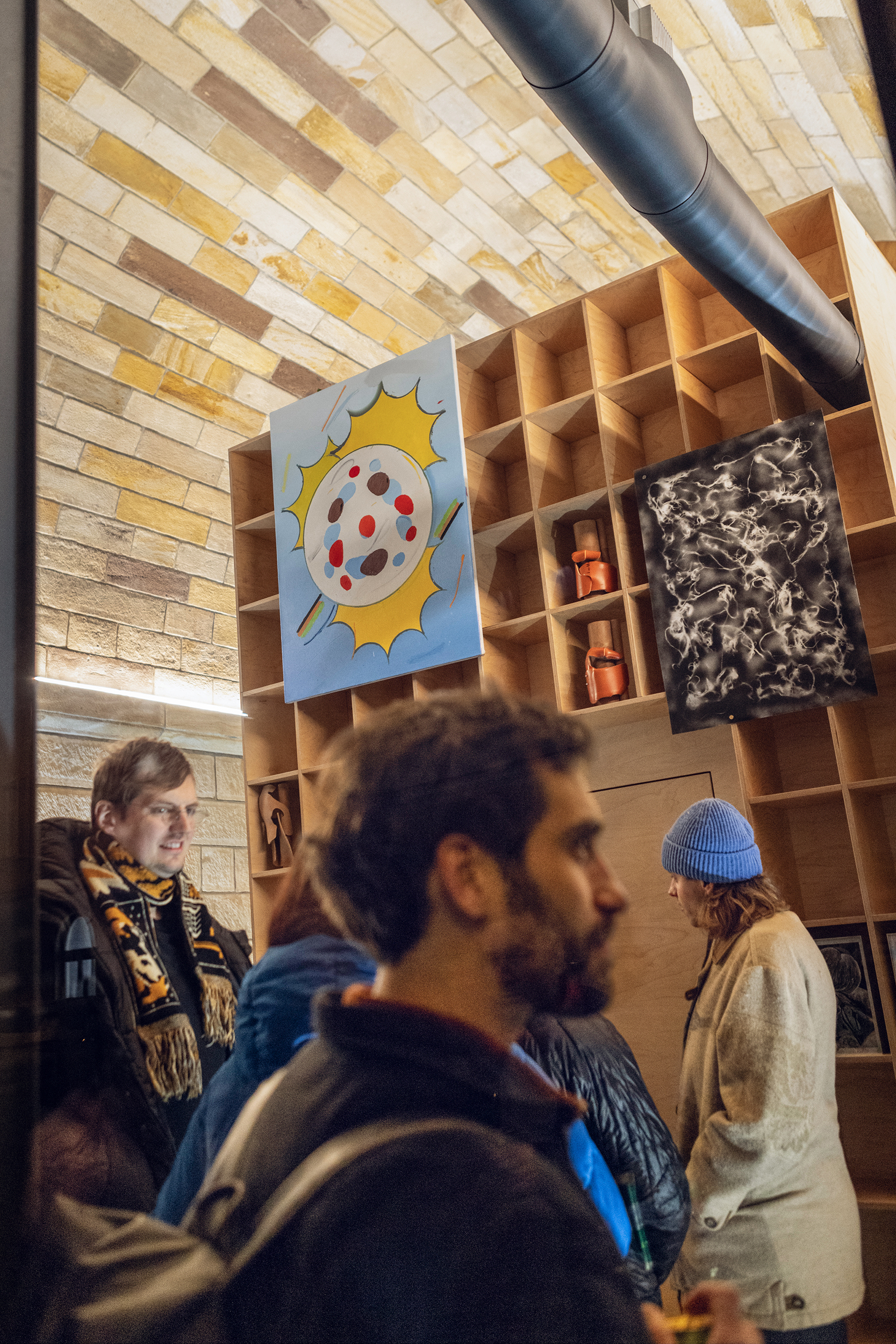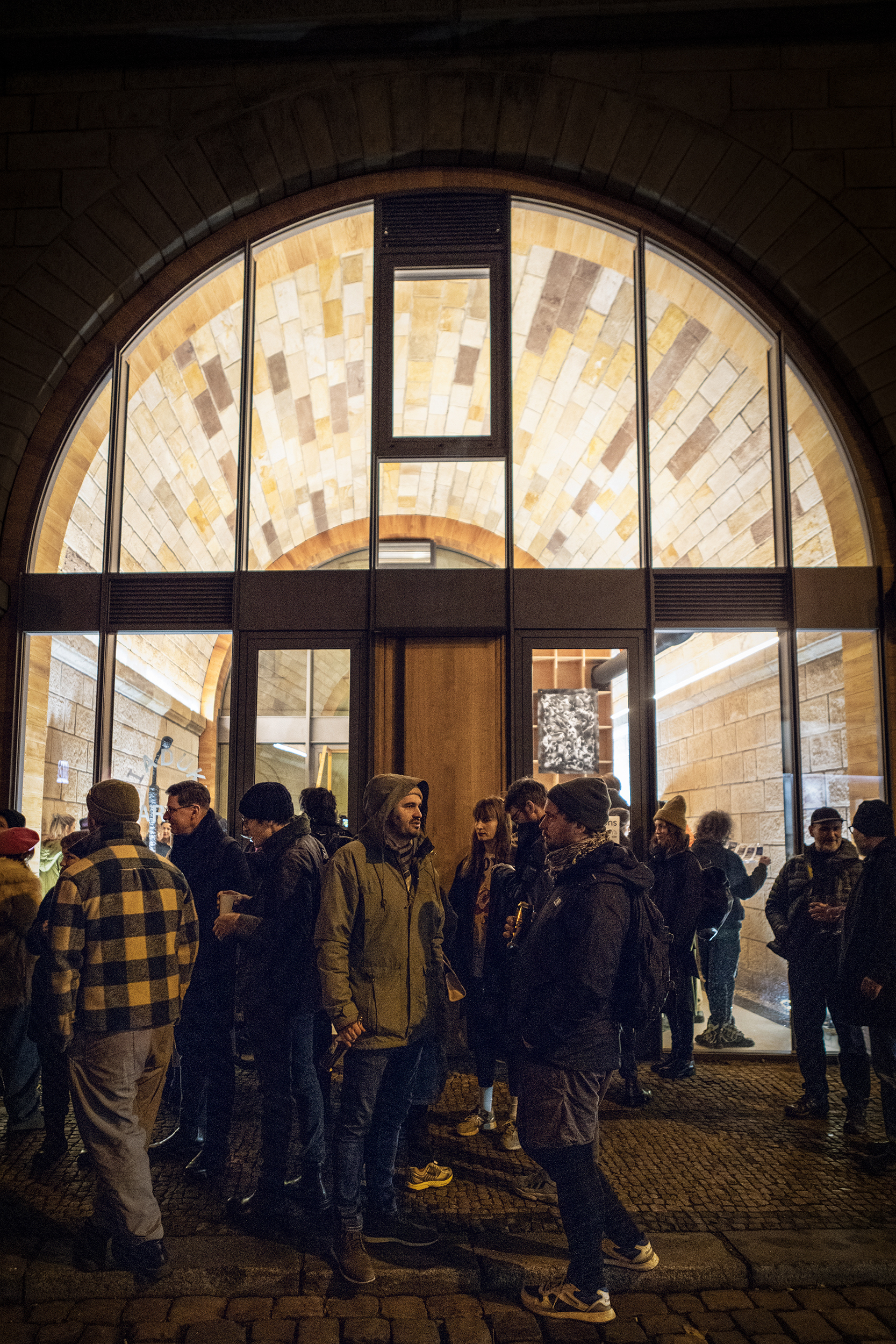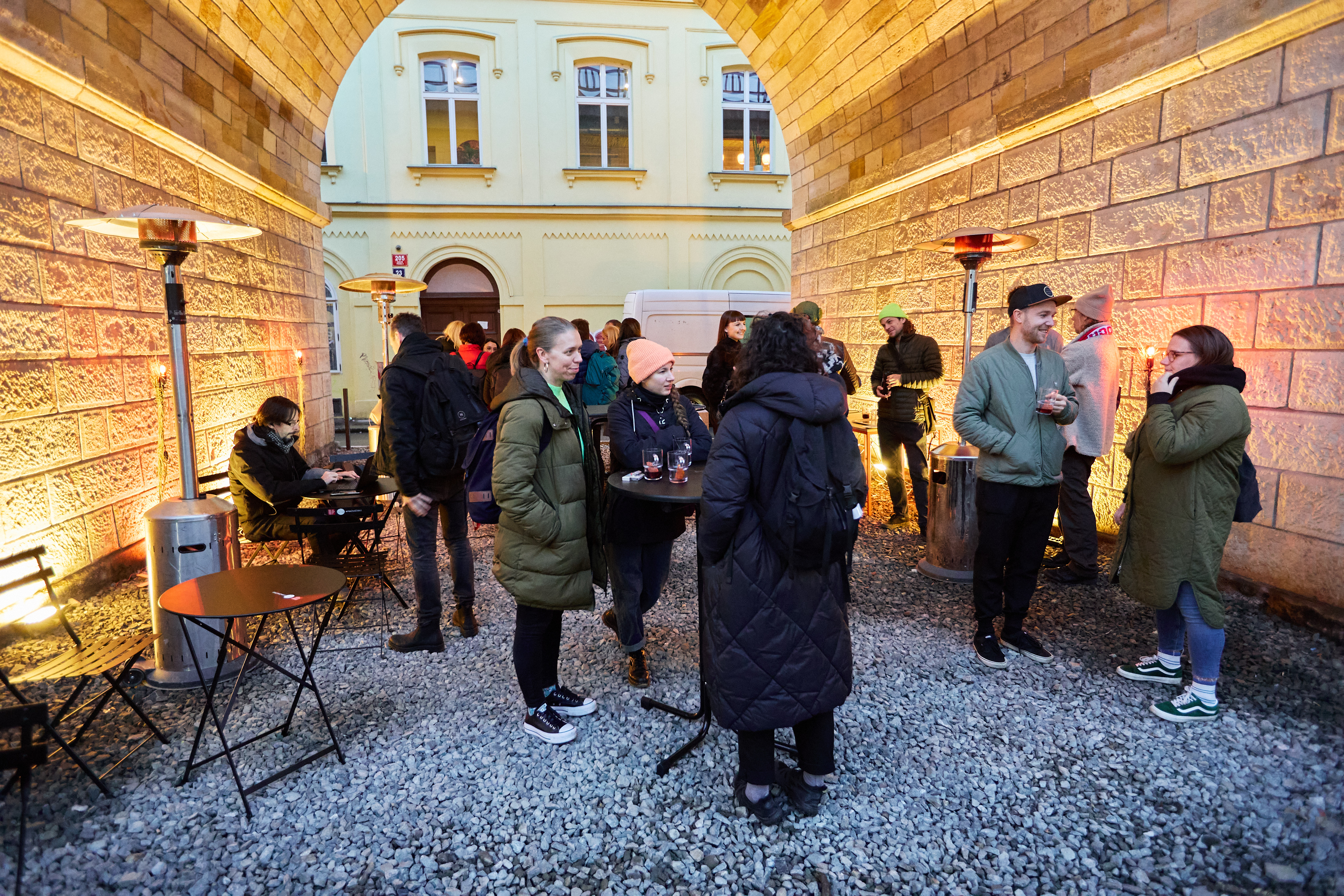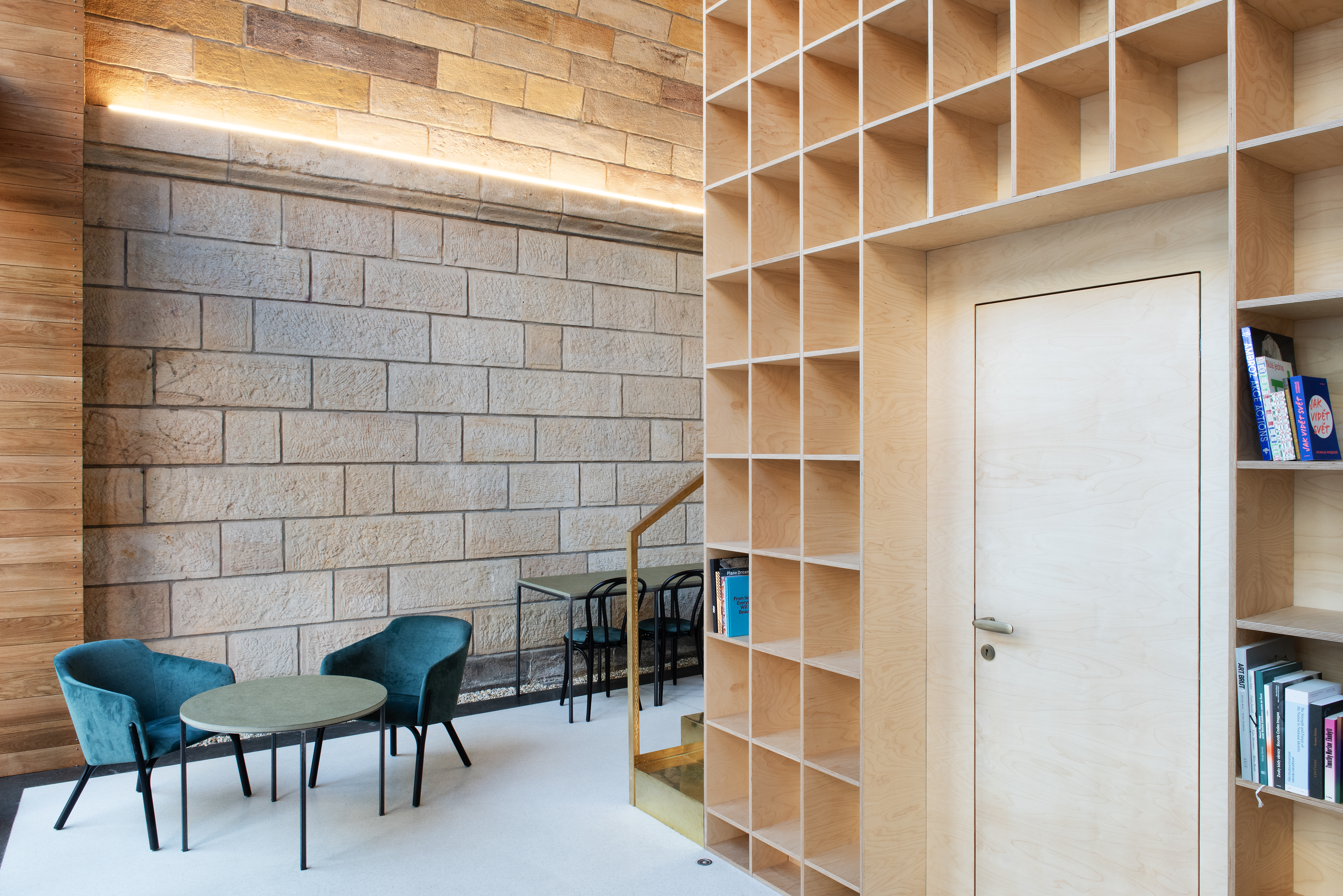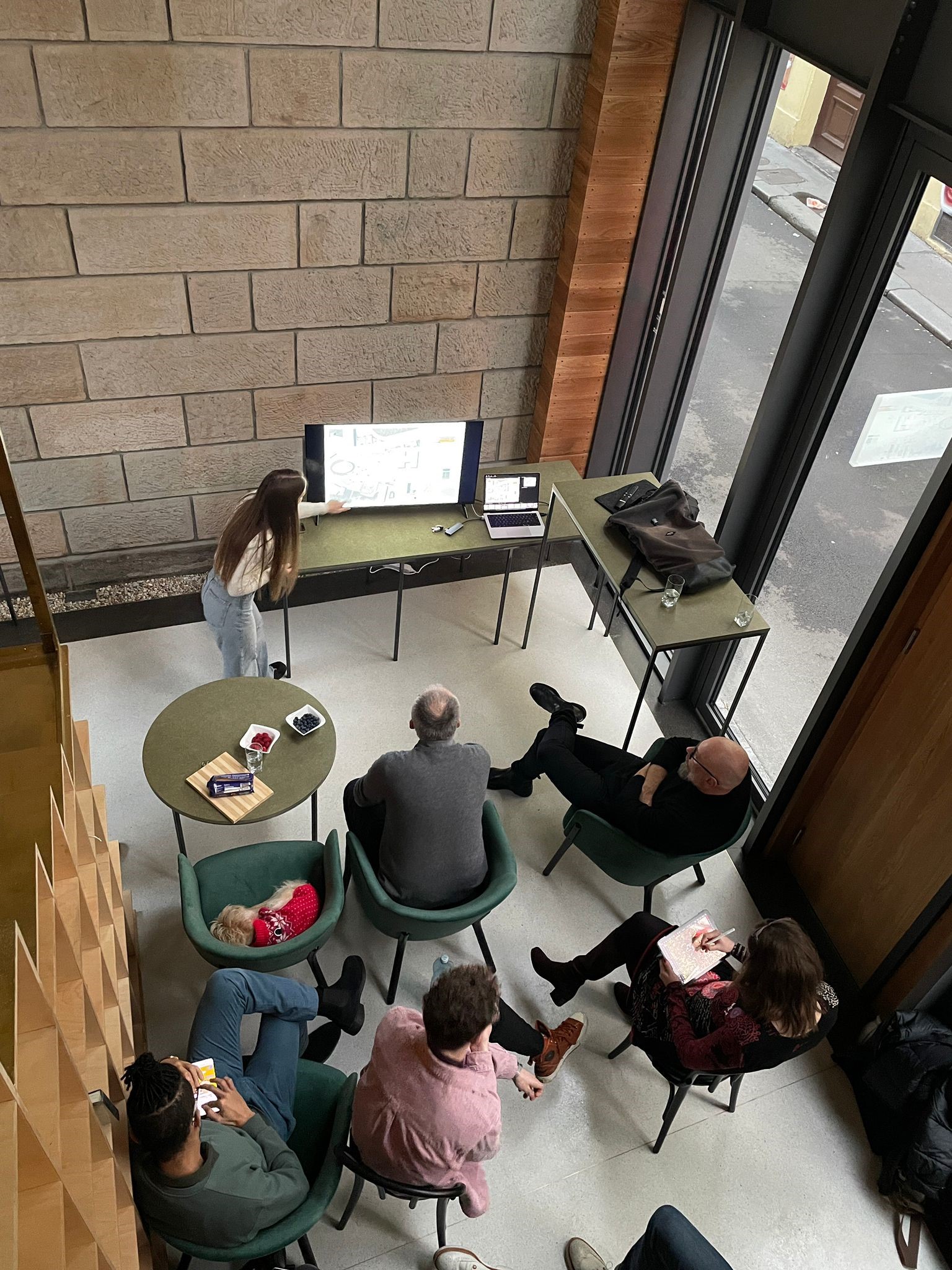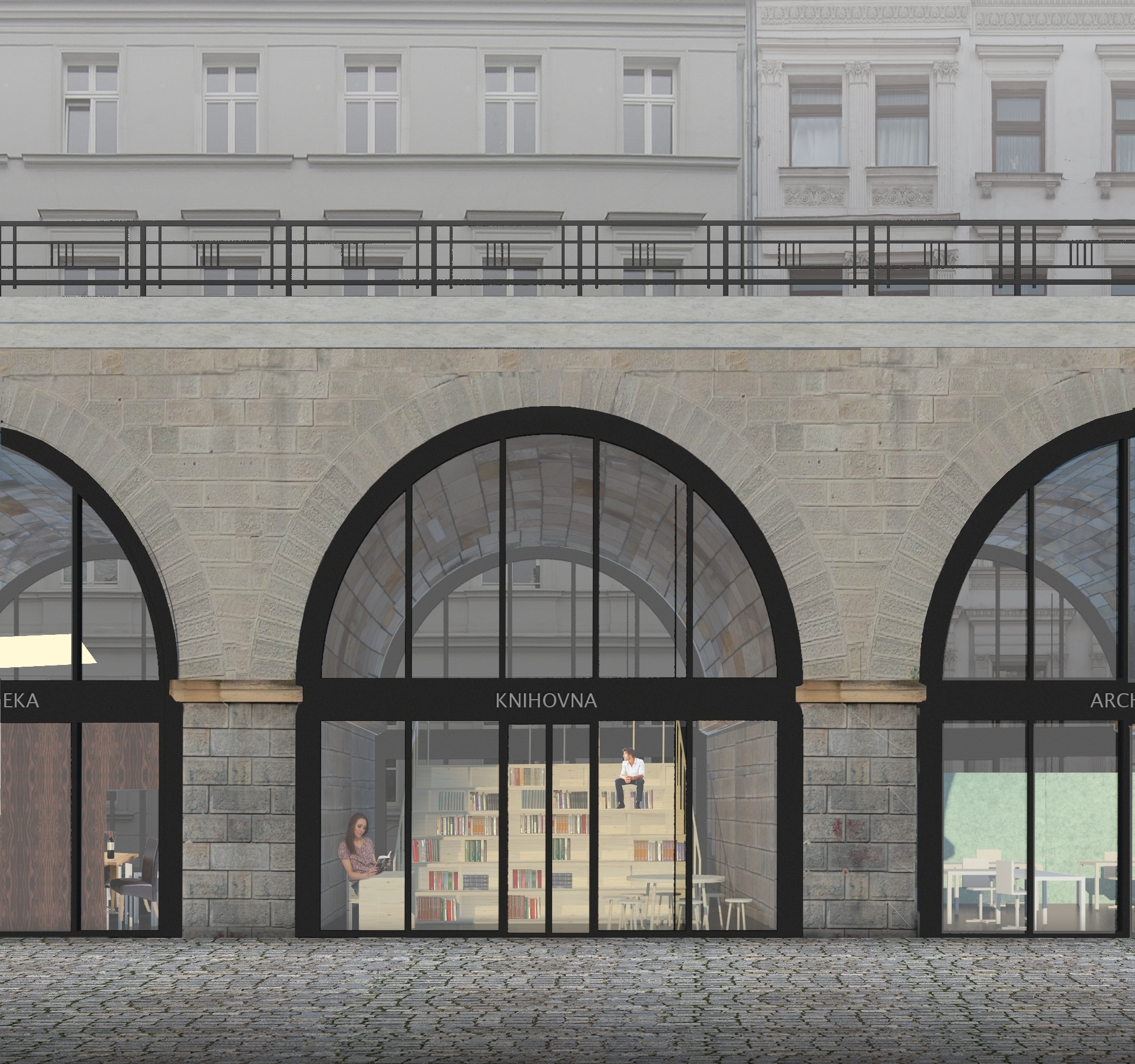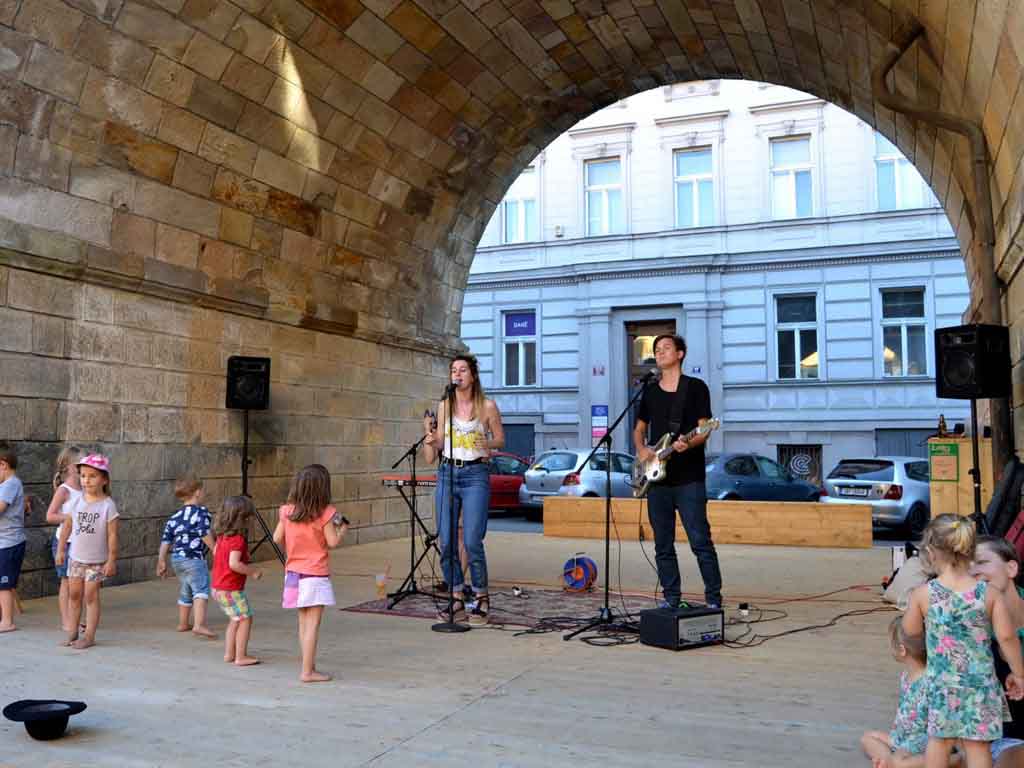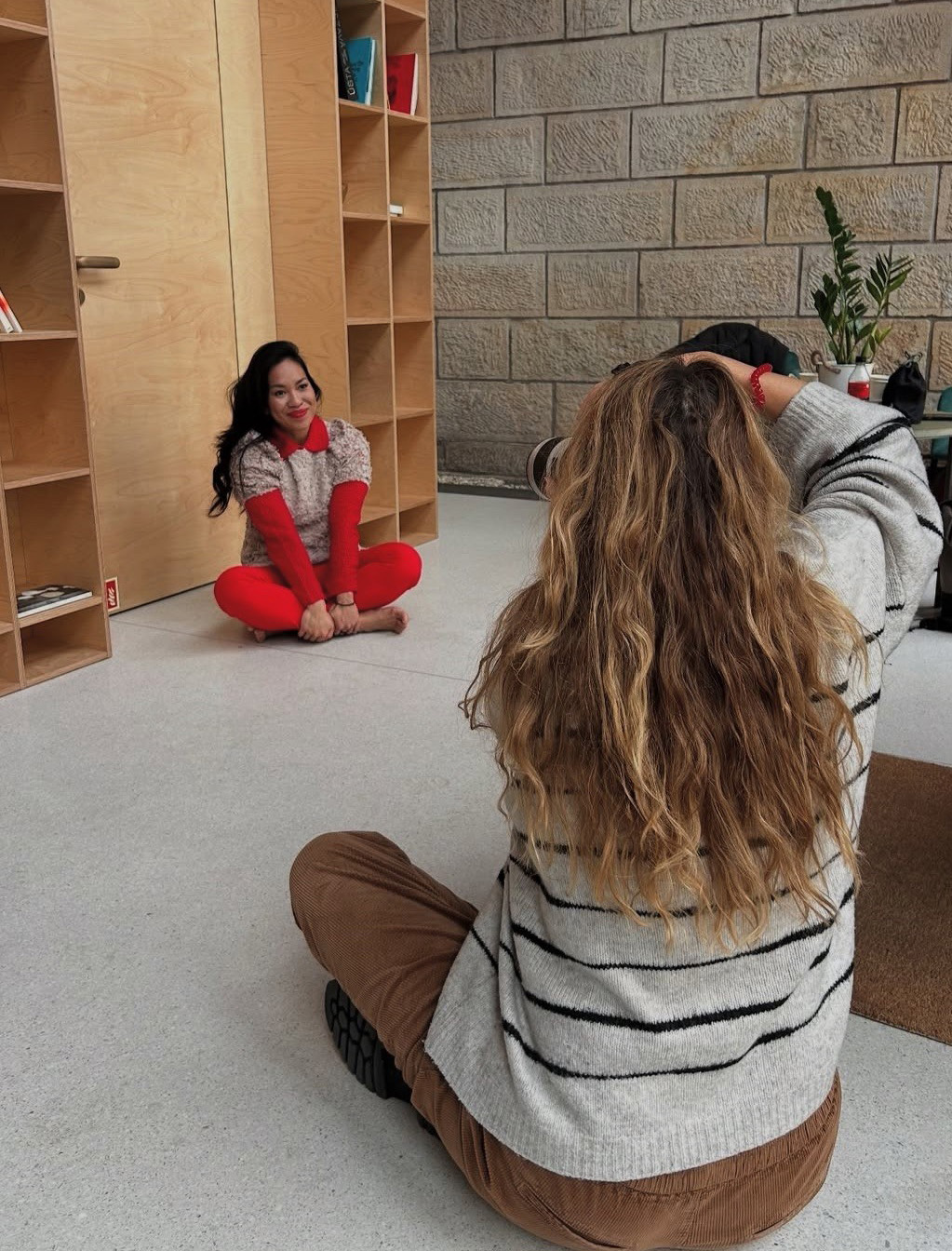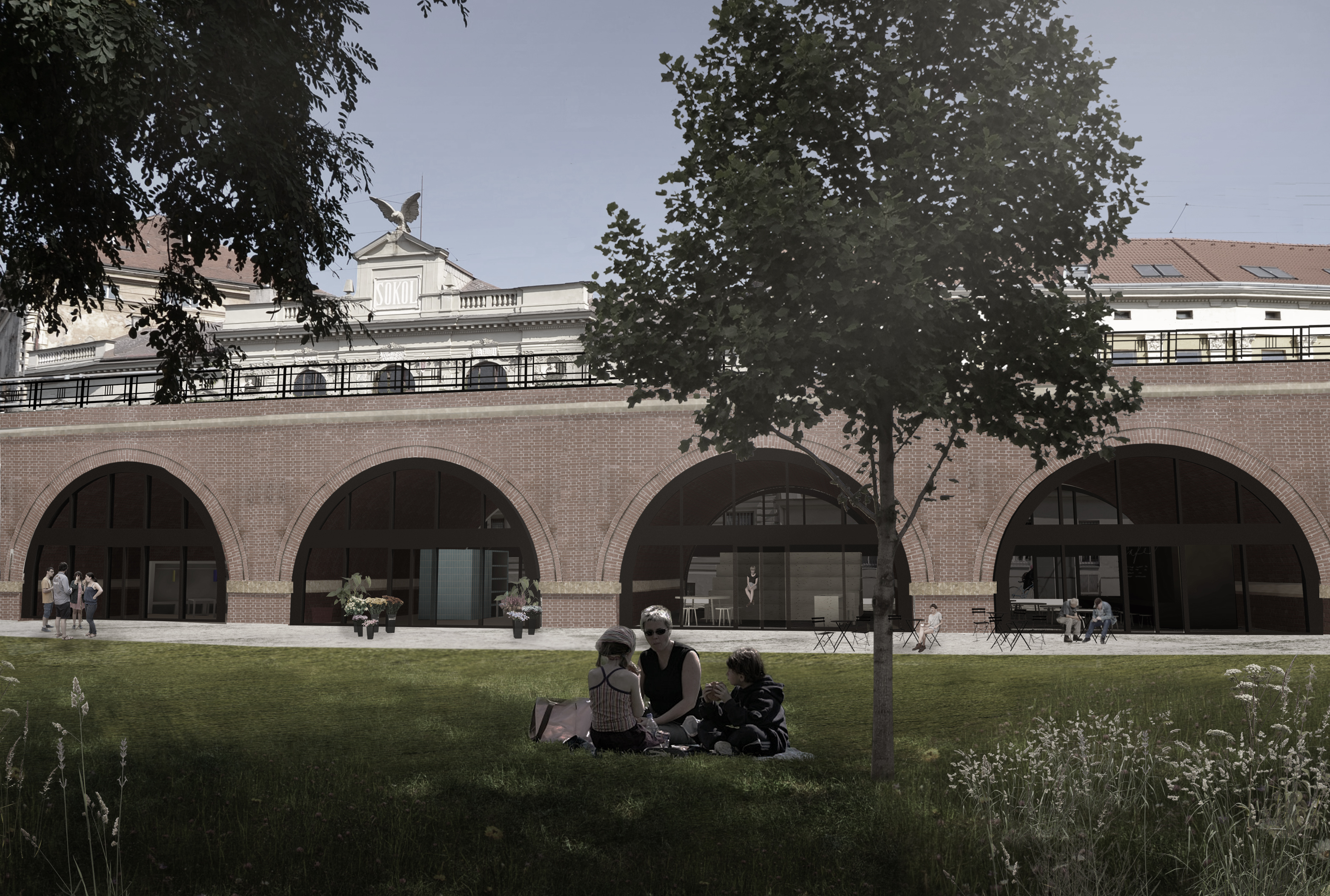Prioritising the places and people that need it the most
1 KM of Urban Change
The Path to Transforming Viaduct Karlin into a Community Asset
Breathing new life into neglected spaces beneath the railway viaduct, transforming them into vibrant places for the local affordable economy. Over 10 years, this initiative united non-profits, residents, and local and state authorities to support emerging creatives and small businesses. In 2024, the Pilot Arch opened for public use, with more to come. A seamless blend of heritage preservation and sustainable practices, this project highlights the power of grassroots-driven urban transformation.
Czechia
Local
Prague
Mainly urban
It refers to other types of transformations (soft investment)
Yes
2024-12-03
No
No
No
As a representative of an organisation
The Viaduct Karlin revitalization transforms neglected spaces beneath and alongside this historic railway structure, turning it into a vibrant community asset. This bottom-up initiative has fostered collaboration between non-profits, state railway authorities, and city governance to unlock the viaduct’s potential for public benefit. The proposed affordable economy model ensures public property serves local communities rather than falling into abandonment or over-commercialization.
Built in 1849, 1 km-long the Negrelli Viaduct is Prague’s second-oldest bridge (after Charles Bridge) and was once Europe’s longest viaduct built in one piece. Now a national monument, it remains a key rail connection.
The revitalization process was initiated by the Centre for Central European Architecture (CCEA) during the long-planned viaduct renovation, which the State Railway Company began due to the technical condition of the structure, focusing solely on the bridge itself. Meanwhile, the surrounding spaces were being used as illegal parking lots and dumping grounds. Through site-specific interventions with local civic groups, residents, and artists, CCEA raised awareness of the area’s public potential. In December 2024, the first tangible step, the Pilot Arch, opened for community use, with zoning approval for the entire area now underway.
This 10-year process led to a harmonious division of the property between the state and the city, along with an approved revitalization plan that includes an innovative affordable economy model for the spaces under and along the viaduct, curated by non-profits and local communities. The initiative benefits residents, individuals, and small-scale creative businesses, which often struggle to find affordable street-level retail spaces. At the same time, the project demonstrates that independent non-profits can be key drivers of change in the built environment.
Built in 1849, 1 km-long the Negrelli Viaduct is Prague’s second-oldest bridge (after Charles Bridge) and was once Europe’s longest viaduct built in one piece. Now a national monument, it remains a key rail connection.
The revitalization process was initiated by the Centre for Central European Architecture (CCEA) during the long-planned viaduct renovation, which the State Railway Company began due to the technical condition of the structure, focusing solely on the bridge itself. Meanwhile, the surrounding spaces were being used as illegal parking lots and dumping grounds. Through site-specific interventions with local civic groups, residents, and artists, CCEA raised awareness of the area’s public potential. In December 2024, the first tangible step, the Pilot Arch, opened for community use, with zoning approval for the entire area now underway.
This 10-year process led to a harmonious division of the property between the state and the city, along with an approved revitalization plan that includes an innovative affordable economy model for the spaces under and along the viaduct, curated by non-profits and local communities. The initiative benefits residents, individuals, and small-scale creative businesses, which often struggle to find affordable street-level retail spaces. At the same time, the project demonstrates that independent non-profits can be key drivers of change in the built environment.
Community Engagement
Affordable Economy
Revitalizing Cultural Heritage
Synergy: People + NGO +City + State
Livable Transport Infrastructure
The Viaduct Karlin revitalization exemplifies sustainability through a holistic approach. By repurposing neglected spaces and blending heritage preservation with sustainable practices, the project addresses environmental goals, fosters local engagement, and supports small businesses. Through its innovative affordable economy model, it contributes to the social fabric of the community and promotes long-term economic resilience.
Environmental
By repurposing neglected spaces beneath the historic Negrelli Viaduct, the project unlocks the potential of this linear structure, improving the residential area between Prague’s medieval core and its 19th-century surroundings. The adaptive reuse of the viaduct preserves cultural heritage while incorporating sustainable design practices.
Social
The initiative fosters community engagement and involves non-profit organizations, residents, district, city, and state authorities in both planning and execution. This collaborative approach ensures that the revitalized spaces reflect the community’s needs and aspirations. By offering affordable workspaces, the project strengthens social cohesion and supports local culture. Additionally, the Pilot Arch, a unique 'city room', is available free of charge for non-commercial community activities during the trial period.
Economic
The project introduces an innovative affordable economy model, approved by the Prague City Council (2019), allocating spaces under and along the viaduct for various uses: 40% for commercial activities (e.g., bars, bistros), 40% for creative endeavors (e.g., studios, workshops), and 20% for startups (e.g., art/research residencies, small-scale initiatives). This balanced allocation fosters a resilient, diverse local economy. Offering 44 new units, the project provides affordable spaces for individuals and small organizations that struggle to find retail spaces at street level in new developments, contributing to economic sustainability.
Environmental
By repurposing neglected spaces beneath the historic Negrelli Viaduct, the project unlocks the potential of this linear structure, improving the residential area between Prague’s medieval core and its 19th-century surroundings. The adaptive reuse of the viaduct preserves cultural heritage while incorporating sustainable design practices.
Social
The initiative fosters community engagement and involves non-profit organizations, residents, district, city, and state authorities in both planning and execution. This collaborative approach ensures that the revitalized spaces reflect the community’s needs and aspirations. By offering affordable workspaces, the project strengthens social cohesion and supports local culture. Additionally, the Pilot Arch, a unique 'city room', is available free of charge for non-commercial community activities during the trial period.
Economic
The project introduces an innovative affordable economy model, approved by the Prague City Council (2019), allocating spaces under and along the viaduct for various uses: 40% for commercial activities (e.g., bars, bistros), 40% for creative endeavors (e.g., studios, workshops), and 20% for startups (e.g., art/research residencies, small-scale initiatives). This balanced allocation fosters a resilient, diverse local economy. Offering 44 new units, the project provides affordable spaces for individuals and small organizations that struggle to find retail spaces at street level in new developments, contributing to economic sustainability.
The Viaduct Karlin revitalization project aims to blend design, culture, and community to create an aesthetically rich experience while addressing contemporary needs.
The process emphasizes a collaborative approach, actively involving local artists, galleries, and community groups. In 2013, the project partnered with ten Prague galleries to highlight the space’s creative potential. The three-day Line Galleries Prague program included art installations, lectures, concerts, and workshops. In 2015, a symposium with artists, architects, and authorities was held to discuss its transformation.
"Summer Under the Viaduct," in 2016, was a critical three-month site-specific installation organized with local artists and communities. It demonstrated the neglected viaduct's potential as a lively meeting hub with performances and interactive experiences, showcasing its ability to support the creative community. The revitalization plan was also presented at the "Metamorphoses of Viaducts in Europe" conference, where local and international experts (architects, creative managers and cultural agents) reviewed case studies from Paris, Vienna, Zurich, and Prague.
Breathing new life into neglected spaces beneath the historic Negrelli Viaduct, the project preserves cultural heritage while introducing modern design elements. The adaptive reuse of the viaduct enhances its historical character, transforming underutilized zones into vibrant, accessible spaces. The Pilot Arch hosts cultural events, workshops, gatherings contributing to Prague's aesthetic. This collaboration creates a dynamic, community-driven space that nurtures artistic expression and cultural vibrancy. By opening up the arches for local creative initiatives, small businesses, and community events, the project fosters a rich, engaging environment that supports Prague's diverse cultural landscape.
The process emphasizes a collaborative approach, actively involving local artists, galleries, and community groups. In 2013, the project partnered with ten Prague galleries to highlight the space’s creative potential. The three-day Line Galleries Prague program included art installations, lectures, concerts, and workshops. In 2015, a symposium with artists, architects, and authorities was held to discuss its transformation.
"Summer Under the Viaduct," in 2016, was a critical three-month site-specific installation organized with local artists and communities. It demonstrated the neglected viaduct's potential as a lively meeting hub with performances and interactive experiences, showcasing its ability to support the creative community. The revitalization plan was also presented at the "Metamorphoses of Viaducts in Europe" conference, where local and international experts (architects, creative managers and cultural agents) reviewed case studies from Paris, Vienna, Zurich, and Prague.
Breathing new life into neglected spaces beneath the historic Negrelli Viaduct, the project preserves cultural heritage while introducing modern design elements. The adaptive reuse of the viaduct enhances its historical character, transforming underutilized zones into vibrant, accessible spaces. The Pilot Arch hosts cultural events, workshops, gatherings contributing to Prague's aesthetic. This collaboration creates a dynamic, community-driven space that nurtures artistic expression and cultural vibrancy. By opening up the arches for local creative initiatives, small businesses, and community events, the project fosters a rich, engaging environment that supports Prague's diverse cultural landscape.
The Viaduct Karlin revitalization project integrates inclusion through accessible design, affordability, and a participatory governance model. It provides affordable spaces for local businesses, creatives, and startups, creating an inclusive economy. Public hubs like the Pilot Arch are made accessible for community use, promoting inclusivity. The governance approach actively involves local residents, non-profits, and authorities, ensuring diverse community input through bottom-up initiatives. This makes the project a model for inclusive urban regeneration, fostering equality and resilience.
Additionally, the revitalization plan integrates nature into the design, enriching the space and getting inspired by the original character of the site, where the viaduct was first built in a natural setting, and urban development was gradually layered over time. The project promotes ecological balance, benefiting the entire community and ensuring long-term social and environmental inclusivity.
Additionally, the revitalization plan integrates nature into the design, enriching the space and getting inspired by the original character of the site, where the viaduct was first built in a natural setting, and urban development was gradually layered over time. The project promotes ecological balance, benefiting the entire community and ensuring long-term social and environmental inclusivity.
The Viaduct Karlin revitalization project has actively involved citizens and civil society through a bottom-up approach, encouraging local participation from the very beginning. Residents, artists, non-profits, and local businesses have been engaged in decision-making processes, from the early 2013 partnership with galleries to the 2016 "Summer Under the Viaduct" event. During this event, a petition was initiated that played a key role in transforming the public space under the viaduct from a parking area into a more community-focused space. This inclusive approach ensures the project aligns with the community's needs, fostering a sense of ownership. Through public consultations and collaboration, the local population has shaped the revitalization, enhancing both social and cultural impact. The process also demonstrates that independent cultural non-profits can be key drivers of change in the built environment.
CCEA, through the process, engaged stakeholders at various levels, ensuring broad collaboration across local (City District Prague 8, private owners, ngo´s), regional (City of Prague), and national (State Railway Company) contexts. Both the city and the State Railway Company actively participated in the entire process curated by CCEA. All activities were funded by local funds, private sources, and the Swiss-Czech program run by the Ministry of Environment.
First site-specific installation, Line Galleries (2013), led in 2014 to the harmonious division of the property between the state and the city, establishing a base for synergy and collaboration between NGOs, the city, and the state.
In 2015, CCEA organized the symposium "Negrelli Viaduct = Creative Incubator”,bringing together representatives from the District Prague 8, the City of Prague, the State Railway Company, the National Heritage Institute, private owners, engineers, designers,artist, and international guest architects specializing in viaduct renovations. In 2016, "Summer Under the Viaduct" was held as a three-month test for the future transformation of the public space around the viaduct. In 2017, the Prague 8 Municipal District approved the Revitalization Concept Study for theAarea. In 2019, the Prague City Council approved the Revitalization Plan for the Area, which creates over forty affordable rental spaces under the arches. As part of this plan, a unique affordable economy strategy was adopted to ensure inclusive accessibility of retail spaces.
In 2020, preparations for the Pilot Arch began, and in 2024, the Pilot Arch was launched, inviting civic activities. Preparations for the next phases of the complex revitalization are ongoing, including zoning and building permits.
The added value of this multi-level engagement lies in its ability to blend expertise, diverse perspectives, and community input to create a shared vision, making the Viaduct process a model for inclusive urban revitalization.
First site-specific installation, Line Galleries (2013), led in 2014 to the harmonious division of the property between the state and the city, establishing a base for synergy and collaboration between NGOs, the city, and the state.
In 2015, CCEA organized the symposium "Negrelli Viaduct = Creative Incubator”,bringing together representatives from the District Prague 8, the City of Prague, the State Railway Company, the National Heritage Institute, private owners, engineers, designers,artist, and international guest architects specializing in viaduct renovations. In 2016, "Summer Under the Viaduct" was held as a three-month test for the future transformation of the public space around the viaduct. In 2017, the Prague 8 Municipal District approved the Revitalization Concept Study for theAarea. In 2019, the Prague City Council approved the Revitalization Plan for the Area, which creates over forty affordable rental spaces under the arches. As part of this plan, a unique affordable economy strategy was adopted to ensure inclusive accessibility of retail spaces.
In 2020, preparations for the Pilot Arch began, and in 2024, the Pilot Arch was launched, inviting civic activities. Preparations for the next phases of the complex revitalization are ongoing, including zoning and building permits.
The added value of this multi-level engagement lies in its ability to blend expertise, diverse perspectives, and community input to create a shared vision, making the Viaduct process a model for inclusive urban revitalization.
The Viaduct Karlin project integrates a multidisciplinary approach, involving architecture, urban planning, heritage conservation, environmental sustainability, cultural management, and engineering. Architects and urban planners collaborated with heritage experts to balance modern functionality with historical preservation. Environmental specialists contributed strategies for integrating greenery and biodiversity. Community organizers ensured inclusivity through public engagement. Cultural managers facilitated artistic programming and creative economy models.Local neighbors legal expert participated in preparing the land transfer between the city and the railway, consulting on subsequent project phases.
Construction companies played a crucial role in implementation, while for the Pilot Arch, we collaborated with the Klokner Institute at the Czech Technical University in Prague to analyze its technical performance. This interdisciplinary collaboration resulted in a revitalized space that is socially, environmentally, and economically sustainable, serving as a model for holistic urban regeneration. Most of the initiators and active individuals involved in the revitalization process live in the Karlín neighborhood or within the city of Prague.
Construction companies played a crucial role in implementation, while for the Pilot Arch, we collaborated with the Klokner Institute at the Czech Technical University in Prague to analyze its technical performance. This interdisciplinary collaboration resulted in a revitalized space that is socially, environmentally, and economically sustainable, serving as a model for holistic urban regeneration. Most of the initiators and active individuals involved in the revitalization process live in the Karlín neighborhood or within the city of Prague.
Unlike conventional urban renewal projects driven by large-scale commercial investments, the Viaduct Karlin revitalization process is a bottom-up, community-driven transformation that reclaims public infrastructure for local benefit. Instead of focusing solely on the technical renovation of the historic viaduct, the project—initiated by the Centre for Central European Architecture (CCEA)—introduced potential of the linear structure with a new use —an affordable economy model that ensures accessible spaces for small-scale creative businesses, artists, and local entrepreneurs, who typically struggle to find affordable small-scale, street-level retail spaces in new developments.
This project stands out by integrating heritage preservation with sustainable urban practices, transforming neglected spaces into an inclusive, economically viable, and socially engaging environment. While mainstream urban developments often prioritize high-yield commercial ventures, the Viaduct Karlin approach curates public space through non-profits and local communities, ensuring long-term affordability and accessibility.
The collaborative process, spanning over a decade, fostered a unique partnership between non-profits, state and city authorities, and residents, demonstrating that independent civic organizations can lead systemic change in the built environment—a model that challenges traditional top-down urban planning. The opening of the Pilot Arch in 2024 marks the first step in a replicable framework for revitalizing underutilized urban infrastructure, proving that grassroots initiatives can drive meaningful, large-scale urban regeneration.
This project stands out by integrating heritage preservation with sustainable urban practices, transforming neglected spaces into an inclusive, economically viable, and socially engaging environment. While mainstream urban developments often prioritize high-yield commercial ventures, the Viaduct Karlin approach curates public space through non-profits and local communities, ensuring long-term affordability and accessibility.
The collaborative process, spanning over a decade, fostered a unique partnership between non-profits, state and city authorities, and residents, demonstrating that independent civic organizations can lead systemic change in the built environment—a model that challenges traditional top-down urban planning. The opening of the Pilot Arch in 2024 marks the first step in a replicable framework for revitalizing underutilized urban infrastructure, proving that grassroots initiatives can drive meaningful, large-scale urban regeneration.
1. Research and Awareness (2012–2013)
Initially, the State Railway Company focused solely on railway renovation. CCEA raised awareness through The Line Galleries Prague (2013), a three-day intervention in collaboration with leading galleries that showcased alternative public uses. These early efforts supported by media initiated discussions on integrating community spaces into the viaduct’s future.
2. Community-Driven Activation (2014–2019)
In 2014, CCEA facilitated negotiations transferring land under the viaduct’s arches to the City of Prague, ensuring long-term public access. The Creative Incubator Symposium (2015) united urbanists, architects, and policymakers to explore alternative uses. Summer Under the Viaduct (2016) tested temporary community uses—helping shape an adaptive reuse model that directly responded to local needs rather than speculative interests.
3. Policy Integration and Institutional Collaboration (2019–2021)
By 2019, the City of Prague approved a Revitalization Study, including an affordable economy model to maintain long-term accessibility and prevent speculative development. The project strengthened cooperation between state railway authorities, municipal representatives, and non-profits, establishing a sustainable governance framework.
4. Sustainable Implementation and Future Scalability (2022–2024)
The Pilot Arch, launched in 2024, serves as a testbed for economic, social, and spatial models. The project offers a replicable model for revitalizing railway infrastructure while balancing historic preservation with contemporary urban needs. Further revitalization efforts continue.
Conclusion
This grassroots-led approach integrates heritage preservation with urban innovation, ensuring accessibility, sustainability, and affordability. The Viaduct Karlin project demonstrates how non-profits can drive systemic change, offering a viable alternative to top-down urban redevelopment.
Initially, the State Railway Company focused solely on railway renovation. CCEA raised awareness through The Line Galleries Prague (2013), a three-day intervention in collaboration with leading galleries that showcased alternative public uses. These early efforts supported by media initiated discussions on integrating community spaces into the viaduct’s future.
2. Community-Driven Activation (2014–2019)
In 2014, CCEA facilitated negotiations transferring land under the viaduct’s arches to the City of Prague, ensuring long-term public access. The Creative Incubator Symposium (2015) united urbanists, architects, and policymakers to explore alternative uses. Summer Under the Viaduct (2016) tested temporary community uses—helping shape an adaptive reuse model that directly responded to local needs rather than speculative interests.
3. Policy Integration and Institutional Collaboration (2019–2021)
By 2019, the City of Prague approved a Revitalization Study, including an affordable economy model to maintain long-term accessibility and prevent speculative development. The project strengthened cooperation between state railway authorities, municipal representatives, and non-profits, establishing a sustainable governance framework.
4. Sustainable Implementation and Future Scalability (2022–2024)
The Pilot Arch, launched in 2024, serves as a testbed for economic, social, and spatial models. The project offers a replicable model for revitalizing railway infrastructure while balancing historic preservation with contemporary urban needs. Further revitalization efforts continue.
Conclusion
This grassroots-led approach integrates heritage preservation with urban innovation, ensuring accessibility, sustainability, and affordability. The Viaduct Karlin project demonstrates how non-profits can drive systemic change, offering a viable alternative to top-down urban redevelopment.
The Viaduct Karlin project offers several transferable elements for urban revitalization:
• Bottom-up methodology: Engaging communities, artists, and civic groups ensures a people-centered approach.
• Temporary urban testing: Initiatives like Summer Under the Viaduct show how short-term interventions can shape long-term planning.
• Affordable economy model: A balanced mix of cultural, commercial, and start-up spaces prevents gentrification.
• Cross-sector collaboration: Partnerships between non-profits, city officials, and railway authorities provide a replicable governance model.
• Proactive negotiation: As an independent non-profit, CCEA facilitated dialogue between state and city stakeholders to reach synergy.
• Adaptive reuse of infrastructure: Demonstrates how historic railway structures can be revitalized for contemporary urban needs.
Institutions today can reshape the urban environment by moving beyond traditional roles and actively driving change. The Viaduct Karlin project exemplifies how non-profits can take a proactive stance, not just conducting research but engaging in the transformation of public spaces. By facilitating negotiations and collaborations with state and city authorities, institutions like CCEA demonstrate how they can bridge gaps between the public and private sectors, bringing neglected infrastructure back to life. This project shows that independent non-profit organizations can lead innovative, inclusive, and sustainable urban development models.
• Bottom-up methodology: Engaging communities, artists, and civic groups ensures a people-centered approach.
• Temporary urban testing: Initiatives like Summer Under the Viaduct show how short-term interventions can shape long-term planning.
• Affordable economy model: A balanced mix of cultural, commercial, and start-up spaces prevents gentrification.
• Cross-sector collaboration: Partnerships between non-profits, city officials, and railway authorities provide a replicable governance model.
• Proactive negotiation: As an independent non-profit, CCEA facilitated dialogue between state and city stakeholders to reach synergy.
• Adaptive reuse of infrastructure: Demonstrates how historic railway structures can be revitalized for contemporary urban needs.
Institutions today can reshape the urban environment by moving beyond traditional roles and actively driving change. The Viaduct Karlin project exemplifies how non-profits can take a proactive stance, not just conducting research but engaging in the transformation of public spaces. By facilitating negotiations and collaborations with state and city authorities, institutions like CCEA demonstrate how they can bridge gaps between the public and private sectors, bringing neglected infrastructure back to life. This project shows that independent non-profit organizations can lead innovative, inclusive, and sustainable urban development models.
The 1 KM of Urban Change addresses key global challenges like urban decay, social inequality, and environmental sustainability by transforming neglected spaces into community-driven, affordable places for small businesses and local creatives. The initiative responds to the global trend of urban abandonment, adding programs to infrastructure as productive public assets. Through a collaborative, bottom-up approach, it provides a sustainable model for preserving heritage while meeting contemporary needs.
By integrating modern use with heritage preservation, it adds a new layer of functionality to the viaduct, ensuring its relevance in today’s urban context. This approach not only respects the historical significance of the structure but also enhances its utility for contemporary communities, setting a precedent for other cities looking to revitalize historical landmarks while maintaining their cultural integrity. It also tackles economic disparities by offering affordable retail spaces, supporting local entrepreneurship, and fostering long-term community resilience. The project is a blueprint for other cities seeking solutions to similar challenges. This project shows that independent non-profit organizations can lead innovative, inclusive, and sustainable urban development models.
By integrating modern use with heritage preservation, it adds a new layer of functionality to the viaduct, ensuring its relevance in today’s urban context. This approach not only respects the historical significance of the structure but also enhances its utility for contemporary communities, setting a precedent for other cities looking to revitalize historical landmarks while maintaining their cultural integrity. It also tackles economic disparities by offering affordable retail spaces, supporting local entrepreneurship, and fostering long-term community resilience. The project is a blueprint for other cities seeking solutions to similar challenges. This project shows that independent non-profit organizations can lead innovative, inclusive, and sustainable urban development models.
The Viaduct Karlin revitalization has transformed neglected infrastructure into a vibrant community asset, providing affordable spaces for local residents, small businesses, and creatives. It fosters local engagement, supports sustainable urban practices, and promotes heritage preservation. Initiated and curated by an NGO in collaboration with the City of Prague and the State Railway Company, the project serves as a model of urban regeneration. In 2024, the Pilot Arch opened, and the full 1 km revitalization, emphasizing pedestrian access, vital public spaces and connecting neighborhoods to the riverside, is currently underway.

